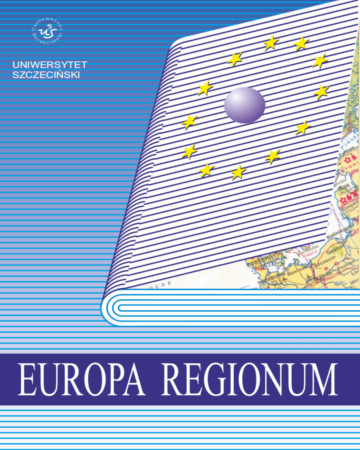
ISSN: 1428-278X
OAI
DOI: 10.18276/er.2017.31-08


Issue archive /
t. 31 2017
Kształtowanie działalności komunikacyjnej ośrodków transferu technlogii - dobre praktyki z zagranicy
(How to shape communication activities of technology transfer offices? Good practices from abroad)
| Authors: |
Marzena
Feldy
dr, Ośrodek Przetwarzania Informacji – Państwowy Instytut Badawczy w Warszawie |
| Keywords: | technology transfer offices communication good practices |
| Data publikacji całości: | 2017 |
| Page range: | 14 (107-120) |
| Klasyfikacja JEL: | O32 |
Abstract
In order to operate effectively technology transfer offices should communicate
not only with representatives of a scientific community and a commercial sector, but also
with other organizations involved in transfer of technology and a local community. The paper
presents, how leading technology transfer offices run its communication activities in
innovative countries such as: the United States, Great Britain, Switzerland and Finland. Conclusions
from the studies are discussed in the context of the situation of Polish technology
transfer offices.
Download file
Article file
Bibliography
| 1. | Ankrah, S.N., Burgess, T.F., Grimshaw, P., Shaw, N.E. (2013). Asking both University and industry actors about their engagement in knowledge transfer: what single-group studies of motives omit. Technovation, 33, 50–65. |
| 2. | Axanova, L. (2012). U.S. Academic Transfer Models. Traditional, Experimental and Hypothetical. Les Nouvelles, June, 125–137. |
| 3. | Baglieri, D., Baldi, F., Tucci, Ch. (2015). University Technology Transfer Office Business Models. One Size does NOT Fit All, paper presented at DRUID15. Rome, June 15–17. |
| 4. | Bąkowski, A. (2015). Centra transferu technologii. W: A. Bąkowski, M. Mażewska (red.), Ośrodki innowacji i przedsiębiorczości w Polsce. Raport 2014 (s. 70–86). Poznań–Warszawa: SOOIPP. |
| 5. | Caldera, A., Debande, O. (2010). Performance of Spanish universities in technology transfer: An empirical analysis. Research Policy, 39, 1160–1173. |
| 6. | Carlsson, B., Fridh, A.-Ch. (2003). Technology transfer in United States universities: A survey and statistical analysis. W: J.S. Metcalfe, U. Cantner (red.), Change, Transformation and Development (s. 379–412). Berlin–Heidelberg: Springer-Verlag. |
| 7. | Etzkowitz, H. (2003). Innovation in innovation: the Triple Helix of university-industrygovernment relations. Social Science Information, 42, 293–337. |
| 8. | Etzkowitz, H. (2008). The Triple Helix. University-Industry-Government Innovation in Action. New York–London: Routledge. |
| 9. | Firlej, J., Kamińska, M. (2012). Wrocławskie Centrum Transferu Technologii przy Politechnice Wrocławskiej – stadium przypadku [maszynopis]. Poznań: CoWinners Sp. z o.o. dla OPI. |
| 10. | Gras, J.M.G., Lapera, D.R.G., Solves, I.M., Jover, A.J.V., Azuar, J.S. (2008). An empirical approach to the organisational determinants of spin-off creation in European universities. International Entrepreneurial Management Journal, 4, 187–198. |
| 11. | Krzewiński, Z., Krzewińska, D. (2012). MIT Techology Licensing Office – studium przypadku [maszynopis]. Poznań: CoWinners Sp. z o.o. dla OPI. |
| 12. | Krzewiński, Z., Miądowicz, M. (2012). Office of Technology Licensing Stanford University – studium przypadku [maszynopis]. Poznań: CoWinners Sp. z o.o. dla OPI. |
| 13. | Krzewiński, Z., Pucher, J. (2012). ETH Transfer przy Politechnice Federalnej w Zurychu – studium przypadku [maszynopis]. Poznań: CoWinners Sp. z o.o. dla OPI. |
| 14. | Krzewiński, Z., Utrecht, R. (2012). ISIS Innovation Ltd. – studium przypadku [maszynopis]. Poznań: CoWinners Sp. z o.o. dla OPI. |
| 15. | Landry, R., Amara, N., Cloutier, J.-S., Halilem, N. (2013). Technology transfer organizations: Services and business models. Technovation, 33, 431–449. |
| 16. | Lockett, A., Wright, M., Franklin, S. (2003). Technology Transfer and Universities’ Spin-Out Strategies. Small Business Economics, 20, 185–200. |
| 17. | Markman, G.D., Gianiodis, P.T., Phan, P.H. (2009). Supply-Side Innovation and Technology Commercialization. Journal of Management Studies, 46, 625–649. |
| 18. | Marszalec, J. (2012). Studia przypadków instytucjonalnego wsparcia transferu wiedzy i technologii z państwowych jednostek badawczych do biznesu. Research and Innovation Services University of Oulu, VTT Ventures Ltd., Cambridge Enterprose Ltd. [maszynopis]. Warszawa: Innovatech Consulting. |
| 19. | O’Kane, C., Mangematin, V., Geoghegan, W., Fitzgerald, C. (2015). University technology transfer offices: The search for identity to build legitimacy. Research Policy, 44, 421–437. |
| 20. | Pazos, D.R., López, S.F., González, L.O., Sandiás, A.R. (2012). A resource-based view of university spin-off activity: New evidence from the Spanish case. Revista Europea de Dirección y Economía de la Empresa, 21, 255–265. |
| 21. | Porozumienie (2016). Porozumienie Spółek Celowych w UEP. Pobrano z: http://ue.po znan.pl/pl/aktualnosci,c16/aktualnosci,c15/porozumienie-spolek-celowych-w-uep,a45431.html (2.04.2016). |
| 22. | Siegel, D.S., Waldman, D., Link, A. (2003). Assessing the impact of organizational practices on the productivity of university technology transfer offices: An exploratory study. Research Policy, 32, 27–48. |
| 23. | Siegel, D.S., Wright, M. (2015). University Technology Transfer Offices, Licensing, and Start-Ups. W: A.N. Link, D.S. Siegel, M. Wright (red.), The Chicago Handbook of University Technology Transfer and Academic Entrepreneurship (s. 1–40). Chicago–London: The University of Chicago Press. |
| 24. | Thursby, J.G., Thursby, M.C. (2002). Who is Selling the Ivory Tower? Sources of Growth in University Licensing. Management Science, 48, 90–104. |
| 25. | Trzmielak, D.M., Grzegorczyk, M. (2011). Rola marketingu w procesach komercjalizacji technologii na rynkach międzynarodowych. W: D.M. Trzmielak (red.), Transfer technologii, przedsiębiorczość innowacyjna w rozwoju firm (s. 151–171). Łódź: Centrum Transferu Technologii Uniwersytetu Łódzkiego. |
| 26. | UJ (2015). Raport CTT CITTRU 2015. Kraków: Uniwersytet Jagielloński. |
| 27. | Weckowska, D. (2015). Learning in university technology transfer offices: transactions-focused and relations-focused approaches to commercialization of academic research. Technovation, 41–42, 62–74. |
| 28. | Wiśniewska, M., Głodek, P. (2015). Scouting wiedzy w ramach uczelni wyższej W: P. Głodek, M. Wiśniewska (red.), Budowa potencjału uczelni wyższej do współpracy z przedsiębiorstwami. Rola scouting wiedzy (s. 11–23). Łódź: Wydawnictwo Uniwersytetu Łódzkiego. |
| 29. | Wiśniewska, M., Głodek, P., Trzmielak, D. (2015). Wdrażanie scoutingu wiedzy w polskiej uczelni wyższej. Aspekty praktyczne. Łódź: Wydawnictwo Uniwersytetu Łódzkiego. |
| 30. | Wright, M., Clarysse, B., Lockett, A., Knockaert, M. (2008). Mid-range universities’ linkages with industry: Knowledge types and the role of intermediaries. Research Policy, 37, 1205–1223. |